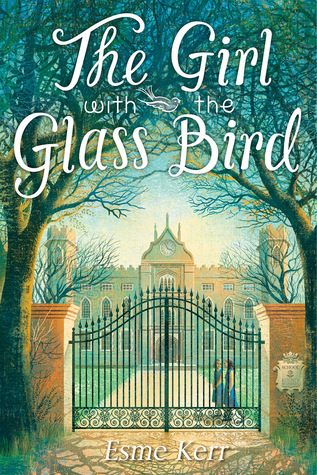 THE GIRL WITH THE GLASS BIRD: A Knight’s Haddon Boarding School Mystery, by Esme Kerr, Chicken House, March 31, 2015, Hardcover, $16.99 (ages 8-12)
THE GIRL WITH THE GLASS BIRD: A Knight’s Haddon Boarding School Mystery, by Esme Kerr, Chicken House, March 31, 2015, Hardcover, $16.99 (ages 8-12)
Lately, I’ve found myself drawn more and more to middle-grade fiction. There’s a magic to it that gets lost in trendy YA. That’s not to say that I’ve given up on YA, it’s just harder to find the magic. My latest magical find is “The Girl with the Glass Bird,” by Esme Kerr.
Edie would much rather live with her grandmother than her awful cousins, but when her grandmother is deemed unfit, Edie has no choice. Except Edie does have a choice — she can runaway. Only that doesn’t work, either.
There is hope, though. Edie’s uncle wants to send her to Knight’s Haddon School. But there’s a catch — Edie will be attending as a fake friend and spy to Anastasia, an unhappy Russian princess. Edie is tasked with discovering if Anastasia, who appears to be overly melodramatic, is making up stories of theft and teasing, or if something is truly happening. And Edie must do this with old-fashioned detective work. Knight’s Haddon School is straight out of the past — students wear old-fashioned uniforms and are not allowed any modern technology. No computers. No televisions. No phones.
As Edie gets settled, she starts to uncover a plot beyond her wildest imagination. It will take all her ingenuity to keep things from spiraling out of control.
I wanted to read “The Girl with the Glass Bird” the minute it arrived. Cover love! I could tell there was something magical to it, and I wasn’t disappointed.
“The Girl with the Glass Bird” is like stepping back in time but holding on to the context of today. The juxtaposition of cell phones mixed with old-timey school rules helps make the book accessible. It also helps show you don’t need technology to unravel a mystery.
Author Esme Kerr’s writing is accessible and her pacing is strong, although the book does wane in a few places. Esme descriptions are strong enough to allow the reader to place themselves at Knight’s Haddon School, but they’re also loose enough to allow the reader to develop their own sense of place. It’s a balancing act she performs exceptionally well.
“The Girl with the Glass Door’s” plot isn’t exceptionally complicated — I did figure things out fairly early on. However, this book is geared toward 8-12-year-olds, so I wouldn’t expect much more on this front. Overall, it’s a charming book worth reading more than once. I’m looking forward to the next book in this new series.
